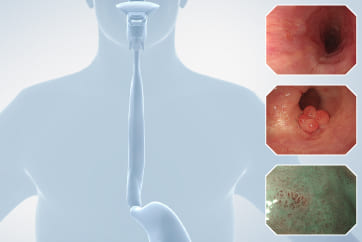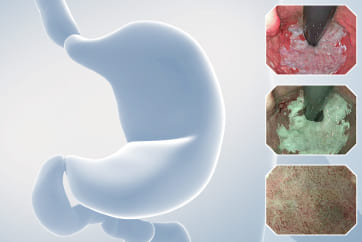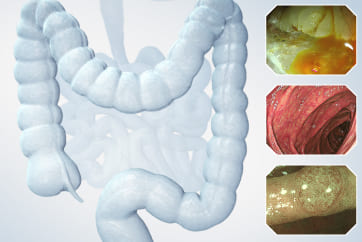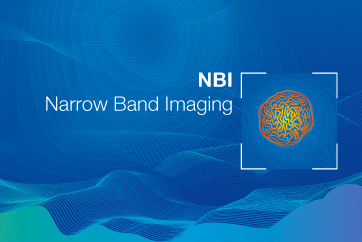Colorectal Case 3

A/Prof. David Hewett
Colonoscopy Clinic, Brisbane Australia
Faculty of Medicine, The University of Queensland
Case video
A diminutive adenoma is detected immediately by ENDO-AID (target mode) during a second examination of the proximal (ascending) colon using TXI. NBI is used to make a diagnosis of adenoma (NICE type 2) with high confidence.
Scope: CF-HQ190LCase: Adenoma
Patient information: M, 54
Medical history: Index, average-risk screening colonoscopy.
A small (8mm) adenoma is detected by ENDO-AID (target mode) on a distal side of a fold in the proximal transverse colon. TXI is used for mucosal inspection. NBI with near focus is used to make diagnosis of adenoma (NICE type 2) with high confidence.
Scope: CF-HQ190L
Case: Adenoma
Patient information: M, 67
Medical history: Surveillance, previous history of colonic polyps.
A diminutive sessile serrated lesion is detected by ENDO-AID (target mode) near a diverticulum in the transverse colon. WLI is used for mucosal inspection. NBI with near focus is used to make diagnosis of a serrated-class lesioin (NICE type 1).
Scope: CF-HQ190L
Case: Sessile serrated lesion
Patient information: F, 64
Medical history: Index, screening colonoscopy (family history of colon cancer).
Surveillance colonoscopy in a patient with serrated polyposis syndrome. Many small and diminutive sessile serrated lesions are visible and detected simultaneously and instantaneously by ENDO-AID (target mode) in the transverse colon. However, a large non-polypoid sessile serrated lesion, which appears as a thickened fold, is not initially detected by ENDO-AID. It is only recognized by ENDO-AID once a centered and closer view is obtained.
TXI is used for mucosal inspection.
Scope: CF-HQ190L
Case: Sessile serrated lesion
Patient information: F, 68
Medical history: Surveillance colonoscopy in a patient with known serrated polyposis syndrome. For colonoscopy to clear the colon of serrated neoplasia.
A good example of the ability of ENDO-AID to simultaneously detect multiple colorectal polyps. ENDO-AID (in target mode) instantaneously detects at least 5 diminutive polyps in the rectum. On a fleeting view, the final polyp detected is recognizable as an adenoma. WLI is used for mucosal inspection.
Scope: CF-HQ190L
Case: Adenoma
Patient information: M, 60
Medical history: Screening colonoscopy (average-risk).
A diminutive adenoma, which imperceptibly with the background mucosa, is instantly detected by ENDO-AID (target mode).
TXI is used for mucosal inspection. NBI is used to make a diagnosis of adenoma (NICE type 2) with high confidence.
Scope: CF-HQ190L
Case: Adenoma
Patient information: M, 72
Medical history: Screening colonoscopy (moderate risk, family history of colorectal cancer).
An example of the use of ENDO-AID in “normal mode” to detect a diminutive adenoma. The endoscopist is alerted to the presence of a lesion by peripheral green lines on the endoscopic view, and a flashing green flag in the sub-image (picture-in-picture view).
TXI is used for mucosal inspection. NBI is used to make a diagnosis of adenoma (NICE type 2) with high confidence.
Scope: CF-HQ190L
Case: Adenoma
Patient information: M, 56
Medical history: Screening colonoscopy (index, average-risk).
Overall Comment
These cases demonstrate the ease of application and effectiveness of applying ENDO-AID to screening and surveillance colonoscopy.
ENDO-AID seamlessly integrates with routine colonoscopy; the detection alert appears on the main endoscopic image (target mode) or on the subimage (normal mode), without the need for a second monitor.
WLI or TXI can be used for routine inspection, and ENDO-AID provides added reassurance for the endoscopist to ensure that colorectal lesions are detected. NBI with near focus is used to make an optical diagnosis.
* Specifications, design and accessories are subject to change without any notice or obligation on the part of the manufacturer.






